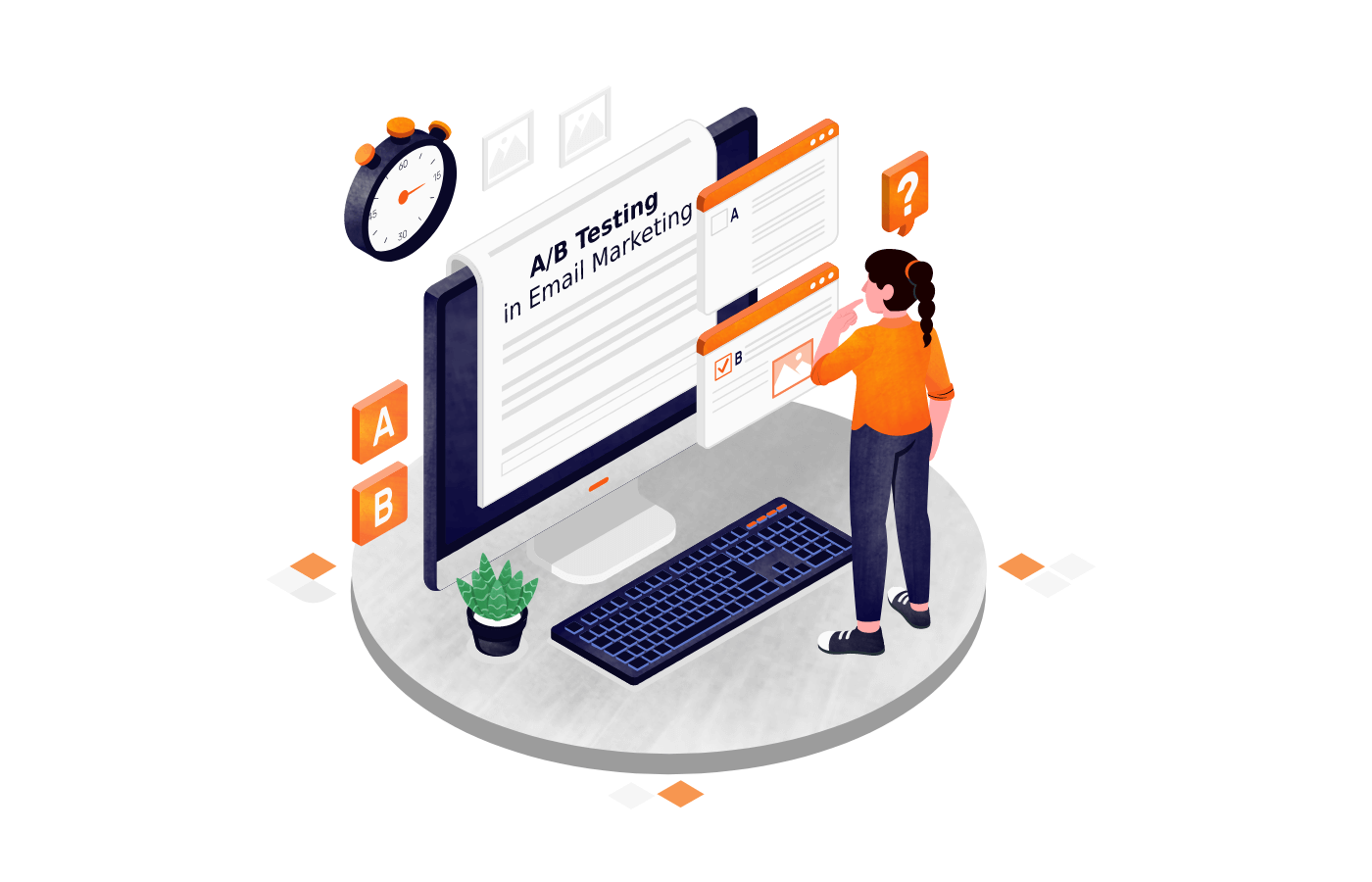A/B testing is a powerful method to refine and enhance your email marketing strategy, particularly when it comes to optimizing images and multimedia. By systematically testing different variations, you can determine which elements drive the highest engagement and conversions. Here’s a comprehensive guide on using A/B testing to optimize your email marketing images and multimedia for maximum effectiveness.
Understanding A/B Testing for Images and Multimedia
A/B testing, or split testing, involves creating two or more versions of an email with variations in images or multimedia elements. These variations are then sent to different segments of your audience to compare their performance. The goal is to identify which version achieves better engagement and conversion rates.
Identifying Key Elements to Test
Testing Image Types and Styles
Images play a crucial role in capturing attention and conveying your message. Testing different types and styles of images can help determine what resonates best with your audience.
- Visual Content: Compare product images, lifestyle images, and graphics.
- Image Style: Test different styles, such as professional photography versus illustrations.
Evaluating Image Placement
The placement of images within an email can impact engagement. Testing various placements helps you understand where images are most effective.
- Above the Fold: Test images placed at the top versus those placed lower in the email.
- Inline Images: Compare images embedded within text versus standalone images.
Comparing Image Sizes and Formats
The size and format of images can affect load times and user experience. Testing different sizes and formats helps identify the optimal choice for performance and engagement.
- Image Size: Test larger images versus smaller ones.
- Image Format: Compare formats like JPEG versus PNG.
Testing Use of Multimedia Elements
Multimedia elements, such as videos and GIFs, can enhance engagement. Testing these elements helps determine their impact on conversions.
- Videos: Test including video thumbnails versus embedding video links.
- GIFs: Compare static images versus animated GIFs.
Designing Effective A/B Tests
Create Clear Hypotheses
Before starting A/B testing, define clear hypotheses about what you expect to learn from each variation. This helps guide your testing process and interpret the results effectively.
Segment Your Audience
Ensure that your test variations are sent to comparable segments of your audience. This helps in obtaining accurate and reliable results.
Control Variables
When testing different elements, keep other variables constant to ensure that the results are attributed to the changes made. This includes the email copy, subject line, and call-to-action.
Measuring Performance and Analyzing Results
Track Engagement Metrics
Monitor key engagement metrics to evaluate the effectiveness of different images and multimedia elements. Key metrics include open rates, click-through rates, and time spent on email.
- Open Rates: Measure how different images influence the likelihood of an email being opened.
- Click-Through Rates: Assess how variations impact the number of clicks on links or buttons.
Analyze Conversion Rates
Conversion rates indicate how well the images and multimedia drive desired actions, such as purchases or sign-ups. Analyzing these rates helps determine the overall effectiveness of each variation.
- Conversion Tracking: Monitor the number of conversions resulting from different image or multimedia variations.
Evaluate User Feedback
Collecting user feedback provides qualitative insights into how images and multimedia are perceived. This can complement quantitative metrics for a comprehensive analysis.
- Feedback Surveys: Use surveys or feedback forms to gather opinions on image or multimedia preferences.
Implementing Insights and Optimizing Campaigns
Apply Successful Variations
Based on A/B test results, implement the variations that performed best in terms of engagement and conversions. Use these insights to refine your email marketing strategy.
Continuously Test and Iterate
A/B testing should be an ongoing process. Continuously test new variations and refine your approach based on evolving audience preferences and trends.
Best Practices for A/B Testing in Email Marketing
Ensure Statistical Significance
To obtain reliable results, ensure that your A/B tests have a large enough sample size. This helps in making accurate comparisons and drawing valid conclusions.
- Sample Size: Determine the required sample size based on your email list and desired confidence level.
Maintain Consistency
Ensure that your email design remains consistent except for the elements being tested. This helps in isolating the impact of the tested variables.
- Design Consistency: Keep email layout, copy, and CTA consistent across variations.
Monitor Results in Real-Time
Track and analyze results in real-time to make timely adjustments if necessary. This allows for quicker optimization and improved campaign performance.
- Real-Time Analysis: Use analytics tools to monitor performance metrics as soon as they become available.
FAQs
What is the purpose of A/B testing in email marketing?
A/B testing helps identify which variations of email elements, such as images and multimedia, drive the highest engagement and conversions. It allows you to make data-driven decisions to optimize email performance.
How do I choose what to test in an A/B test for email marketing?
Choose elements that are likely to impact engagement and conversions, such as image types, sizes, placements, and multimedia elements. Focus on variations that align with your campaign goals.
What metrics should I track during A/B testing for images and multimedia?
Track metrics such as open rates, click-through rates, conversion rates, and user feedback to evaluate the effectiveness of different images and multimedia elements.
How can I ensure that my A/B test results are reliable?
Ensure that your A/B tests have a sufficient sample size, maintain consistency in other email elements, and monitor results in real-time to obtain reliable and actionable insights.
How often should I conduct A/B testing for email marketing?
A/B testing should be an ongoing process. Regularly test new variations and iterate based on results to continuously optimize your email marketing strategy and maintain high engagement levels.
















